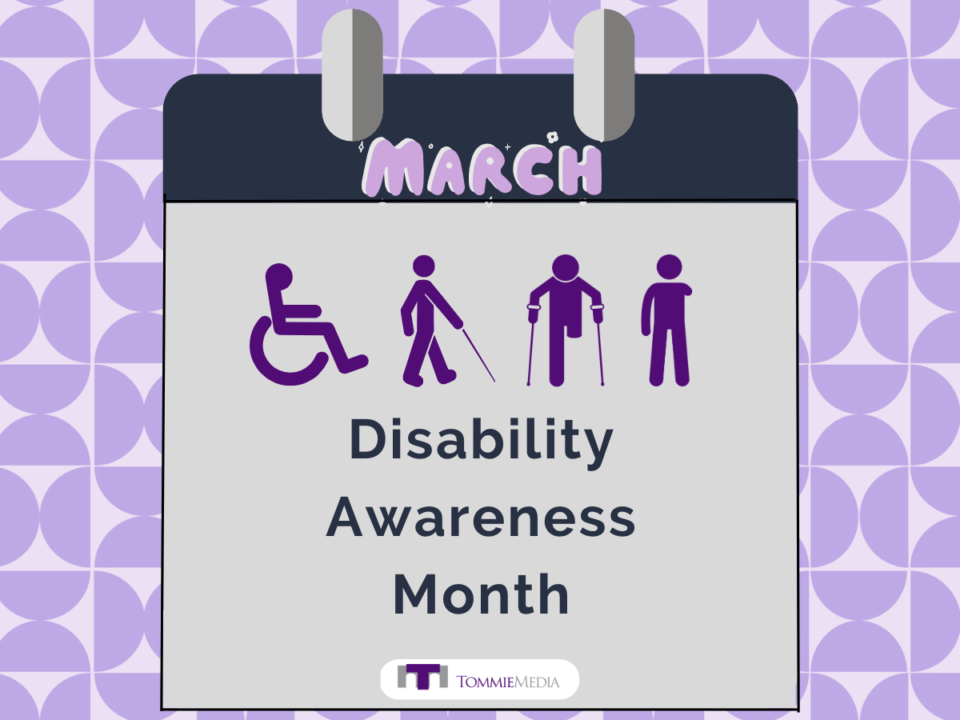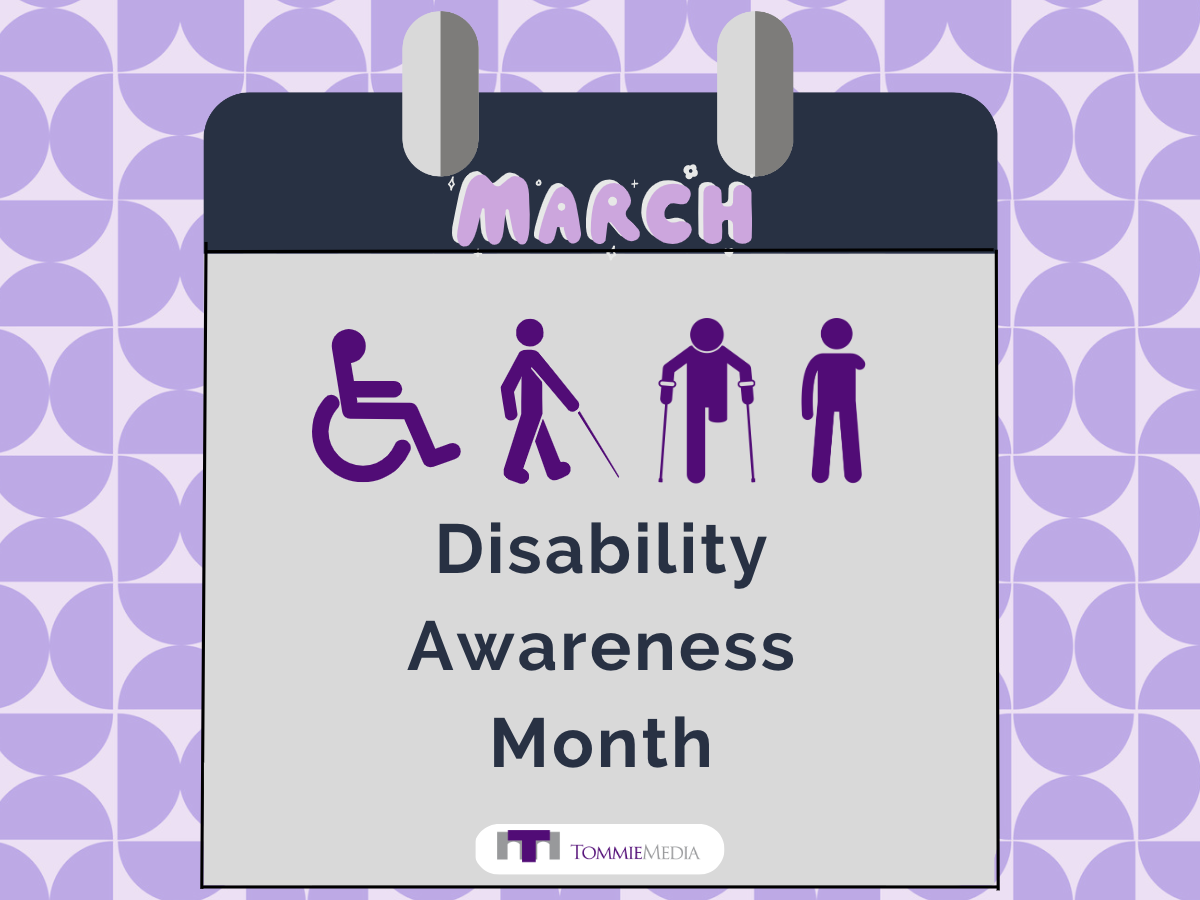
St. Thomas fourth-year Lisan Hasnain was sitting in his Foundations for College Success class while attending the Dougherty Family College in 2020 when he was told about the university’s mobile app. Out of curiosity he downloaded it, but quickly realized an issue: he was unable to navigate the app. Hasnain is blind and uses a screen reader while using technology, but the St. Thomas app was not compatible with screen readers and was riddled with issues.
Hasnain brought this to the dean of the DFC’s attention and was connected with Innovation and Technology Services, where he began to voluntarily test out the app. Hasnain has since become a part-time worker for ITS, working with St. Thomas’ digital tools as well as the ones from third-party vendors used by professors.
“Digital accessibility is a term that defines making sure that digital content like websites, applications … emails, documents that are digitally created, making sure that all that content is accessible for folks with disabilities,” Hasnain said.
Hasnain works with a variety of assistive technologies including screen readers, magnifiers and dictation to ensure that the digital tools used in learning at St. Thomas will be compatible for those who may need the assistance. Hasnain uses assistive technologies for his classes and understands why it is so important for many other students.
“Assistive technology is a medium that allows people with disabilities to be able to access digital content… independently,” Hasnain said.
But Hasnain isn’t the only student working in digital accessibility for ITS. Senior Thomas Kula and sophomore Panya Anand both work for ITS and St. Thomas E-Learning And Research. They help create and facilitate Canvas courses and badges that teach faculty, staff, and students about digital accessibility.
Hasnain, Kula, Anand and Digital Learning Success manager Jo Montie make up the Digital Accessibility Ambassador Leadership Team. The team educates members of the St. Thomas community about accessibility through the Canvas course, resulting in an electronic badge.
Sixty people completed the Digital Accessibility Basics Foundation badge over the past year, and this semester, 18 people will be pursuing the Digital Accessibility Ambassador badge. The goal of ITS and STELAR is that those who complete these badges will have the tools and knowledge to educate others on accessibility.
“We wanted to have a way for individuals … who wanted to go deeper into digital accessibility and be what we call a Digital Accessibility Ambassador,” Montie said. “The idea of taking your own knowledge and understandings about digital accessibility and starting to think about ‘how do I further bring that out into the St. Thomas community and into the world.’”
Digital accessibility is more than just assistive technology. Ensuring that presentations are color blind-friendly, adding captions, and making sure videos are descriptive are all things that students, staff, and faculty should consider, according to Montie. STELAR aims for learning to be equally accessible by all at St. Thomas.
Montie’s goal is to reach a point that “everybody in our community has full and equitable access to any digital content.”
Focus on digital accessibility has increased greatly in the past few years as more classwork moves online and away from traditional pen and paper. Kimberly Schumann, Director of Disability Resources has noticed that some people never even think about how accessible online assignments are for their fellow classmates.
St. Thomas also hired two graduate students, Jessica Khupe and Dennise Mejia, to be the first Digital Accessibility Content Assistants. These new hires, along with the university’s increasing focus on digital accessibility, coincided with Disability Awareness Month, typically celebrated in March. Schumann believes that disability awareness is a key part to how people interact with each other, and something St. Thomas excels at.
“It’s good to be diversity aware, to think of all of the different diversity of your peers. You go to your classes and you might see different types of diversity that you can’t see like a lot of the invisible disabilities,” Schumann said. “I think one thing St. Thomas does well is have students do a lot of group work and projects together and you’re working with people, sometimes like yourself, sometimes not like yourself in terms of diversity.”
Awareness also factors into how classes and projects are designed, according to Schumann. Staff, faculty, and students are encouraged by Disability Resources to make sure their videos, presentations, and more are made in a way that all students can equally participate and learn. Schumann believes that everyone should work on inclusivity of those with disabilities, especially when it comes to education.
“Be more inclusive in that way in terms of your day-to-day interactions and also learn about how students with disabilities are just as capable as anybody else,” Schumann said. “A lot of bright students that we work with just need to do things in a different way.”
Close to 1000 students are registered with the Office of Disability Resources. Schumann believes many more could benefit from the office’s help, but believes the stigma surrounding issues such as mental health keeps students from seeking assistance.
“There could be more using our services but don’t because I think they are concerned about what other people think … there’s still some shame around particularly mental health diagnoses,” Schumann said.
The offices of Disability Resources and STELAR work closely on this joint initiative surrounding digital accessibility. The two groups’ goal is to continue to improve St. Thomas’ ability to accommodate all students’ ability to learn and thrive in the classroom and online.
“Digital accessibility is the idea of all people having effective use and access to digital information and communications,” Montie said.
For more resources on digital accessibility and disability awareness, visit Disability Resources and STELAR. The Office of Disability Resources can be found in room 110 of the Murray-Herrick Campus Center. STELAR can be found on the lower level of O’Shaughnessy-Frey Library.
Adam Mueller can be reached at muel7541@stthomas.edu.



